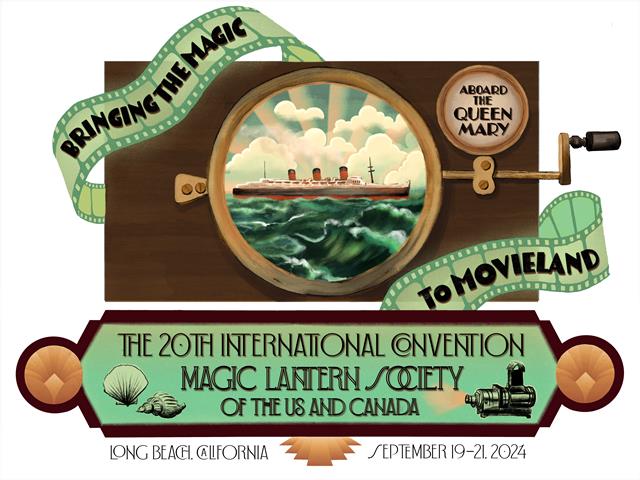
Descriptions and Biographies
Laurence Arcadias
Laurence Arcadias is an animation professor with over 12 years of experience as department chair at the Maryland Institute College of Art (MICA). Her award-winning animated films have screened globally. She has worked as an animation director for French television and at Apple Research group in Silicon Valley. At MICA, she co-founded an astro-animation course in collaboration with Robin Corbet and NASA scientists. Currently pursuing a PhD at LJMU/Transart Institute, she is dedicated to exploring how animation can democratize access to astronomy.
From Animation to Astronomy: A Comparative Analysis of Early Optical Instruments (with Robin Corbet). This presentation explores the intriguing parallels between the development of animation and astronomical tools, highlighting how both fields have historically intersected to advance our understanding of motion and visualization. By examining the evolution of early cinematic devices alongside early astronomical instruments, we aim to uncover the shared principles and technological innovations that have shaped both disciplines.
Mark & Beth Ayers
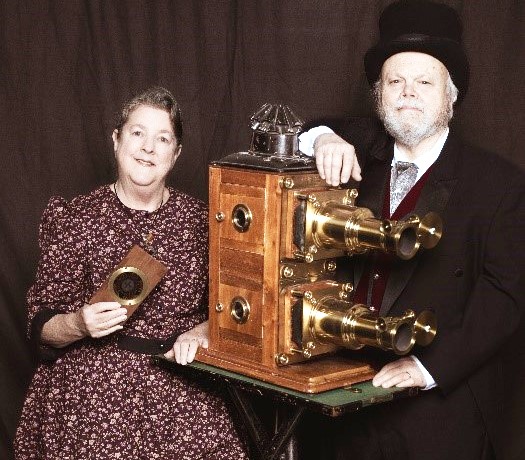
Mark and Beth Ayers saw a Magic Lantern Show, in December of 2014, presented by Terry Borton in Plano, TX. By the next morning, thanks to eBay, we owned our first lantern. We were fascinated. Of course, there’s more to this than owning a lantern. It was a full year before we did our first show. Then, we were hooked. We have performed, as The Professor and Miss Elizabeth, for a variety of groups in the Dallas/Fort Worth area. Beth incorporates hammer dulcimer music into each show. We live in McKinney, TX.
Under the Spreading Chestnut Tree. Join The Professor and Miss Elizabeth in a journey back to 1896. Take a look at Longfellow’s life and poetry through the lens of a Magic Lantern. His work was frequently used in the creation of slides during the last half of the 19th century. The Village Blacksmith will be performed in its entirety. Details of his often-tragic life will be shared along with references to some of his famous poems. Hammer Dulcimer music will accompany the show.
Daniel Barrow
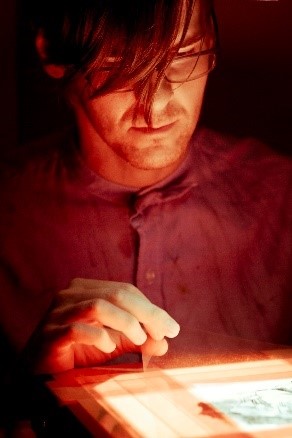
Daniel Barrow is a Montreal-based storyteller/artist who employs multiple strategies in his approach to moving pictures and narrative. He is a full-time, visual/performance artist, best known for creating and adapting comic book narratives to live forms of animation by manipulating drawings (painted slides) on an overhead projector.
A Survey of Projection Performances. Barrow will present a survey of his projection performances inspired by the Victorian magic lantern show.
Ryan Betschart (Shrine Maiden)
Ryan is an Ashkenazi artist from Los Angeles. He is co-director and head curator of San Diego Underground Film Festival, has programmed for Slamdance Film Festival, and has taught at CalArts, UC San Diego, SDSU, Stephens College, and University of North Carolina at Chapel Hill. His films have screened at Fantasia, Slamdance, Edinburgh International Film Festival, Ann Arbor Film Festival, Porto Post/Doc, and Hammer Museum. His band Shrine Maiden’s album And I Arise was named one the Top 10 Experimental Albums of 2020 by Outtallectuals zine, and has performed at Che Cafe, Coaxial Arts, The Church of Fun, and Whammy Analog Media.
Kino Lau: Many Bodies. (with Melissa Ferrari and Shrine Maiden partner: Rachel Makana Aloha O Kauikeolani Nakawatase). Traditionally told through dance (hula) and chant (oli), kino lau: many bodies is a visual retelling of native Hawaiian lore through ambient drone music and magic lantern slides. The term “kino lau” translates to “many bodies” in the native Hawai’ian language. It refers to the earthly forms of the pagan gods of the aina (land). This piece is structured as a hula performance. We begin with a chant that asks for permission to enter a space before moving through the different parts of the story told through musical movements of ambient drone that releases the energy that has accumulated.
Janelle Blankenship
Janelle Blankenship is Associate Professor of Film Studies at the University of Western Ontario. She recently catalogued a collection of Skladanowsky lantern slides and ephemera at the German Technical Museum and is now completing a book on the magic lantern showman and film pioneer Max Skladanowsky. She is the proud owner of a Sciopticon and has also started a project on the history of opaque projection.
Glowing Color: Hedwig Wollner-Beuk, Secession Artist and World Panorama Proprietor.
This presentation unearths the forgotten history of the Austrian artist Hedwig Wollner-Beuk (1890-1956), proprietor of one of the longest running stereoscopic peep theaters in Vienna. Her family-run peep-show attraction miraculously survived two world wars, finally closing its doors in the 1950s.
Laurie Bolewitz
Laurie Bolewitz is the Project Management Coordinator in the Publications Department of the Getty Research Institute in Los Angeles. She is a novice magic lantern enthusiast with an MA in Art History and Visual Cultures from the University of Manchester, UK.
Getty Research Institute Optical Treasures. A talk sharing some of the treasures in the GRI’s optical devices collection. These items are currently not on view to the public, many have not been digitized (or possibly even photographed) as of yet, so I would love to share the knowledge of them with the magic lantern community.
Terry Borton
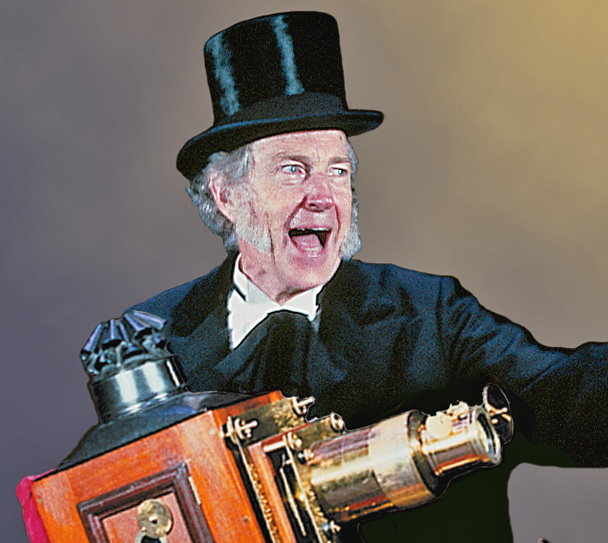
Terry Borton was formerly Editor in Chief of Weekly Reader, the national children’s newspaper. He has spent the last 30 years as a professional touring magic lantern showman, performing more than 1,000 shows across the country, and in six foreign countries. With his wife, Deborah, he is the author of Before the Movies. The very extensive Borton Collection of Magic Lantern Materials is now at the Lucas Museum, to be opened in 2025 here in LA. Terry has just finished another book, Magic Lantern Art: Joseph Boggs Beale, First Great Narrative Artist of the American Screen.
Magic Lantern Art. See a magic lantern show featuring the slides of America’s leading illustrator for the lantern, Joseph Boggs Beale. The show will be mixed with a lecture on the artistic techniques that made Beale’s slides so popular. Based on the forthcoming book, Magic Lantern Art: Joseph Boggs Beale, First Great Narrative Artist of the American Screen.
Performer’s Workshop! Become a better showman! Present a short show segment and get expert feedback. This workshop will operate like a drama class. You’ll have a chance to do a bit of a show, and hear suggestions about it from others, including others with a lot of lantern show experience. If there’s time, you’ll also be able to give it a second try. An excellent way to improve your performance skills.
Ruby Carlson
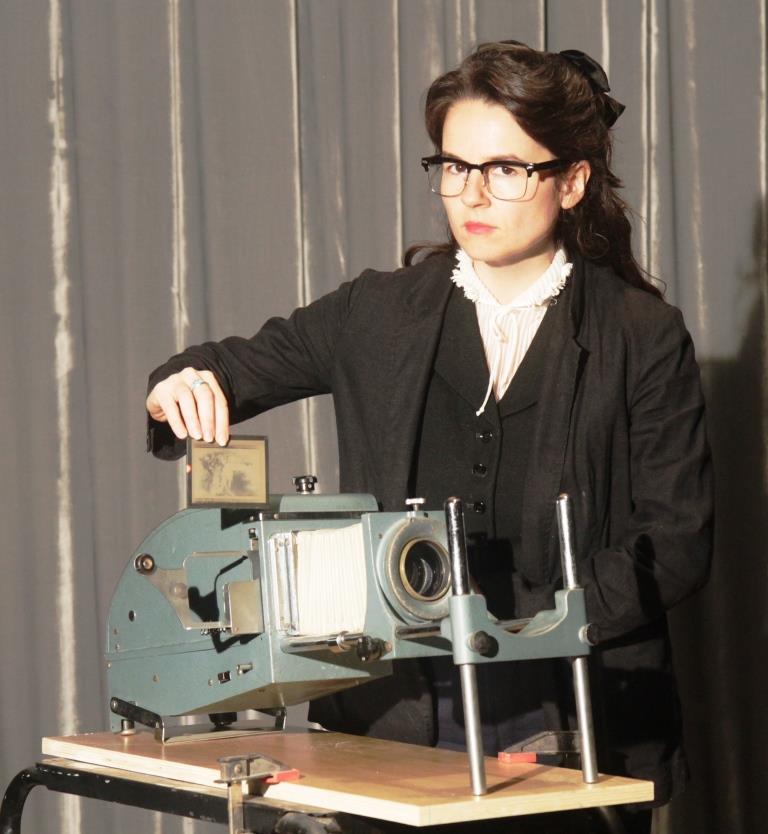
Sara Velas and Ruby Carlson are artists and curators of the Velaslavasay Panorama (VP), a Los Angeles museum dedicated to multi-sensory, contemporary experiences of 19th-century visual amusements. The VP features a garden, immersive installations and the only 360-degree painted panorama on the West Coast, currently exhibiting: Shengjing Panorama, a visionary view of everyday life in Shenyang, China circa 1910-1930, with accompanying model railroad dioramas of La Grande and Shenyang Stations.
“Florence in Ruin—or—The Great Escape.” Sara Velas and Ruby Carlson of the Velaslavasay Panorama present a dual-projection slideshow on traveling while staying still. This experimental work-in-progress performance uses 35mm family archival slides and a donated collection of glass magic lantern slides to wander through imagery of distant spaces.
“Illuminated Projections at the Velaslavasay Panorama.” On June 19, 1787, Robert Barker patented the Panorama for the purpose of displaying views of nature at large by any mode of painting or drawing. On February 2, 2001, the Velaslavasay Panorama (VP) opened in LA for the production of multi-sensory 19th c. visual amusements. Sara Velas and Ruby Carlson will present an illuminated lecture on the history and projects of the VP with an emphasis on recent performances involving projections — magic lantern or otherwise.
Robin Corbet
Robin Corbet is a Senior Research Scientist at the University of Maryland, Baltimore County, based at NASA’s Goddard Space Flight Center. His work centers on studying binary star systems containing black holes or neutron stars using the Fermi Gamma-ray Space Telescope. These extreme systems produce X-rays and gamma rays due to the intense gravitational and magnetic forces at play. Beyond these celestial phenomena, Corbet has also explored innovative approaches to the Search for Extra-Terrestrial Intelligence (SETI). At the Maryland Institute College of Art (MICA), he collaborates with Laurence Arcadias to teach astro-animation, bridging the gap between science and art.
From Animation to Astronomy: A Comparative Analysis of Early Optical Instruments (with Laurence Arcadias – see description above)
Stephanie Delazeri
Stephanie Delazeri is an animator (BFA in Experimental Animation from CalArts) and researcher based in Los Angeles. Her artistic practice focuses on critiquing and exploring the historiography around the 19th and 20th centuries regarding subjects such as gender, labor, film and animation, in order to better illuminate the constructed narratives that drive our society today. She has also worked at museums and theatrical venues where she interweaves her artistic background and interest for history into different multimedia projects, including magic lantern shows, that help illuminate various aspects of the past in order to help the modern public connect their struggles, both personal and societal, with those who have come before them.
An Overview of Erotic and Pornographic Magic Lantern Slides and Their Broader Historical Context. This talk will guide audiences through different examples of pornographic magic lantern slides from the 18th to the beginning of the 20th century, that range from static to mechanical, drawn to photographic. Surrounding the different examples will be historical context that will assist in understanding these slides’ purpose, how/where they would be projected, and intended audience, as well as how they relate to the broader beliefs around sex at their location/time of production.
Nicole Dumaguindin/ Solstice Theatre IE
We are a theatre project founded in 2023 to uplift Queer BIPOC storytelling around land, diaspora, & people power in the Inland Empire. We do this through shadow puppetry, community-based workshops, & new play festivals that honor the Winter & Summer Solstices. Our growth as storytellers & theatre artists are guided by our community, ancestors, and the cycles & seasons in nature. We are the recipients of the California Arts Council’s Creative Corps Inland Socal grant 2024-2025 and won 1st place in the Thrive Inland SoCal Arts Contest.
‘Two Chicanes in Search of a Pueblo’ and ‘El Sofa’: Shadow Puppetry. Shadow puppetry performances of the 10-minute plays “Two Chicanes in Search of a Pueblo” by Josué Emmanuel Muñoz & “El Sofa” by Miguel Ayala. Audiences will see two styles of shadow puppetry–one inspired by Indonesian design & Central American art, the other a playful surreal blend of techniques on a crankie theatre. The comedic stories highlight the importance of defending our relationship with mother nature wherever/whenever we exist & however we choose to culturally identify.
Melissa Ferrari
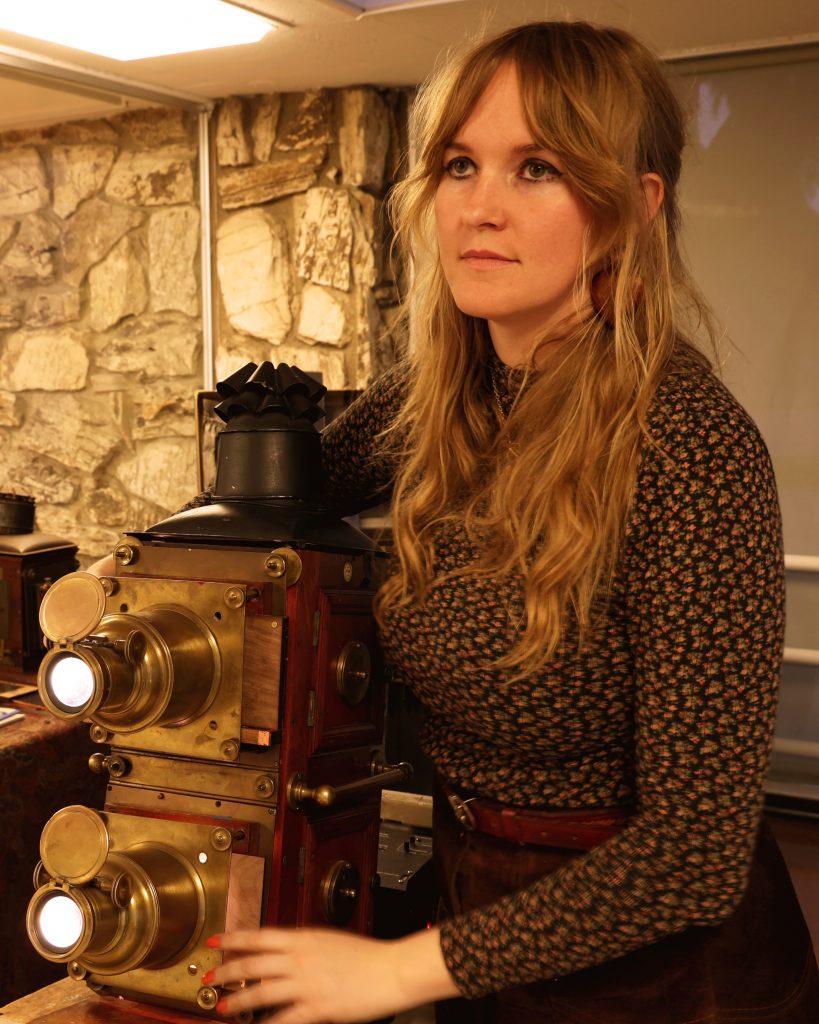
Melissa Ferrari is an experimental animator, nonfiction filmmaker, magic lanternist and educator who seeks to acquaint folklores of the past with contemporary culture. In exposing peripheral histories, she aims to unveil the wonder that lies in the shadow of nonfiction, rather than fiction. Her practice engages the mythification of science and the history of phantasmagoria. Originally from Virginia, Melissa is now based in Los Angeles where she received an Experimental Animation MFA from CalArts. Her lantern shows have been shown in venues such as The Exploratorium, Hauser & Wirth LA, REDCAT, UnionDocs, and the Ann Arbor Film Festival. Recent awards include the 2023 Dick Balzer Award and 2022 Damer E. Waddington Red Cabbage Award.
Kino Lau: Many Bodies. (with Shrine Maiden: Rachel Makana Aloha O Kauikeolani Nakawatase and Ryan Betschart – see description above)
Sempervirens. Summoning the history of lantern lectures as a space for scientific visualization and popular science, the lantern explorations in Sempervirens are rooted in the curatorial philosophy of Redwood Time, following local rhythms and seeking neglected histories and ecologies in the coast of California. These include moments inspired by the nuanced sea glass ecosystem, folkloric entanglements among the sempervirens, and preternatural creatures that inhabit our coast.
Beneath the Spectral Oak: A Phantasmagoria Revival. Beneath the Spectral Oak invokes the tradition of magic lantern phantasmagoria, an 18th century form of horror theater that used hidden lanterns to project apparitions and mythical creatures, embracing the art of ghost-raising. Tracing the conceptual framework of historical Phantasmagoria, this revival traverses scientific, supernatural, and spirit realms, anchored in themes of memento mori, belief, and wonder. Performed with 19th century magic lanterns projecting hand-painted and antique lantern slides, light and shadow are woven into haunted landscapes, ethereal specters, and conjured visions, including spiritualists, alchemists, and incorruptible bodies.
An Exhibition of Contemporary Artists Influenced by Magic Lanterns and Philosophical Toys. This exhibition features the work of contemporary artists galvanized by the mechanisms and concepts found in magic lanterns, philosophical toys, and other early mechanical arts.
The Principles of Lantern Slide Animation. This workshop will introduce strategies used in traditional animation and apply their logic to historic magic lantern slide animations. We will discuss what approaches can be used to maximize the impact of lantern slide animations and “cinematography” to create the most convincing illusions. Participants will then perform animated slides to practice legibility, discuss timing sensibilities, share tips, and apply these lessons to lantern slide fabrication. Animated slides will include chromatropes, slip slides, lever slides, and panoramic slides. A selection of slides will be provided for demonstrations, and participants are encouraged to bring their animated slides to experiment with as well.
Jade Finlinson
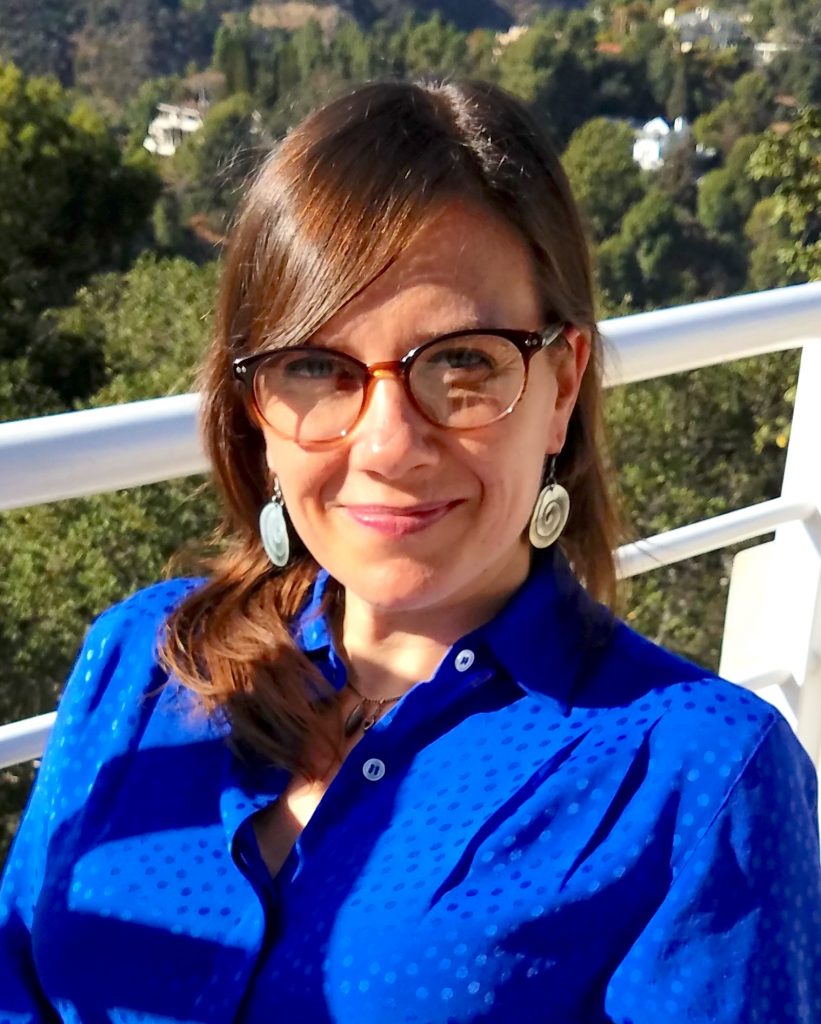
Jade Finlinson (she/her) is an independent researcher and archivist living in Helper, Utah. She earned her MLIS with a concentration in archives from UCLA in 2017, and a BA with honors in History from Pitzer College in 2015. Jade has worked or volunteered as a researcher/archivist in many Southern California museums and institutions, including Getty Research Institute Special Collections, Getty Conservation Institute, Natural History Museum of Los Angeles, UCLA Dept. of Geography Air Photo Archive, UCLA Library Special Collections, and The Velaslavasay Panorama. Her research interests include 19th-century visual culture, history of California and the American West, and historical aerial photography.
Amateur Art Photography in the Late 19th Century and the Lantern Slide Exchange Circuit. Between 1880-1910, enthusiasm for amateur photography spread throughout the US and the world, inspiring thousands of nonprofessionals to join camera clubs that provided technical support and camaraderie while nurturing a hobby increasingly perceived as an art form. Out of this phenomenon arose a distinctive lantern slide exchange and exhibition circuit, with club members producing their own slides to share with clubs in other cities. With a focus on the Los Angeles Camera Club’s participation in the American Lantern Slide Exchange circa 1900, the presentation will show how these exchanges circulated specific visual ideals that reflected contemporary anxieties around modernism and urbanization.
Margot Fitzsimmons
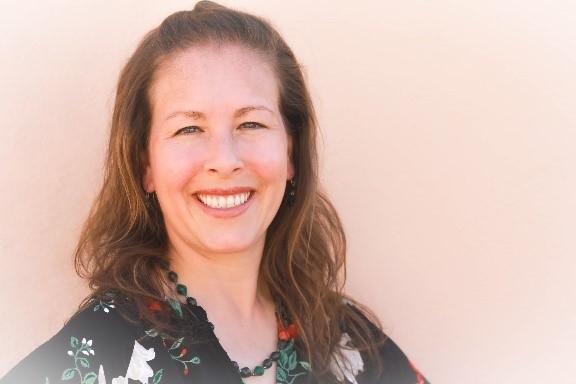
Margot Fitzsimmons, a versatile theater and film director, puppetry artist, and arts educator, specializes in creating captivating content for children. With experience spanning four continents, she has collaborated with artists and organizations worldwide. In 2016, she was honored with the Winifred Ward Memorial Scholarship Award for her outstanding contributions to theater for young audiences. Previously, as Co-Artistic Director of Double Image Theater Lab, she spearheaded artistic direction and leadership, fulfilling organizational goals. She was the Theatrical director at Westmark School where she collaborated with Georgia on “James and the Giant Peach” using rod puppetry, paper mâché, and foam clay to bring each bug to life.
Traveling to Movieland (with Georgia Westwood). Join us aboard the Queen Mary for a 25-minute journey through the enchanting realms of Movieland, blending mesmerizing shadow puppetry with captivating pop-up book visuals. Follow a young explorer’s quest through iconic film scenes, where every shadow and page come alive with the magic of storytelling and imagination. The piece is titled ‘Traveling to Movieland.’ It explores a young adventurer’s journey through iconic film scenes brought to life through innovative shadow puppetry and dynamic pop-up book visuals.
Mindy Johnson
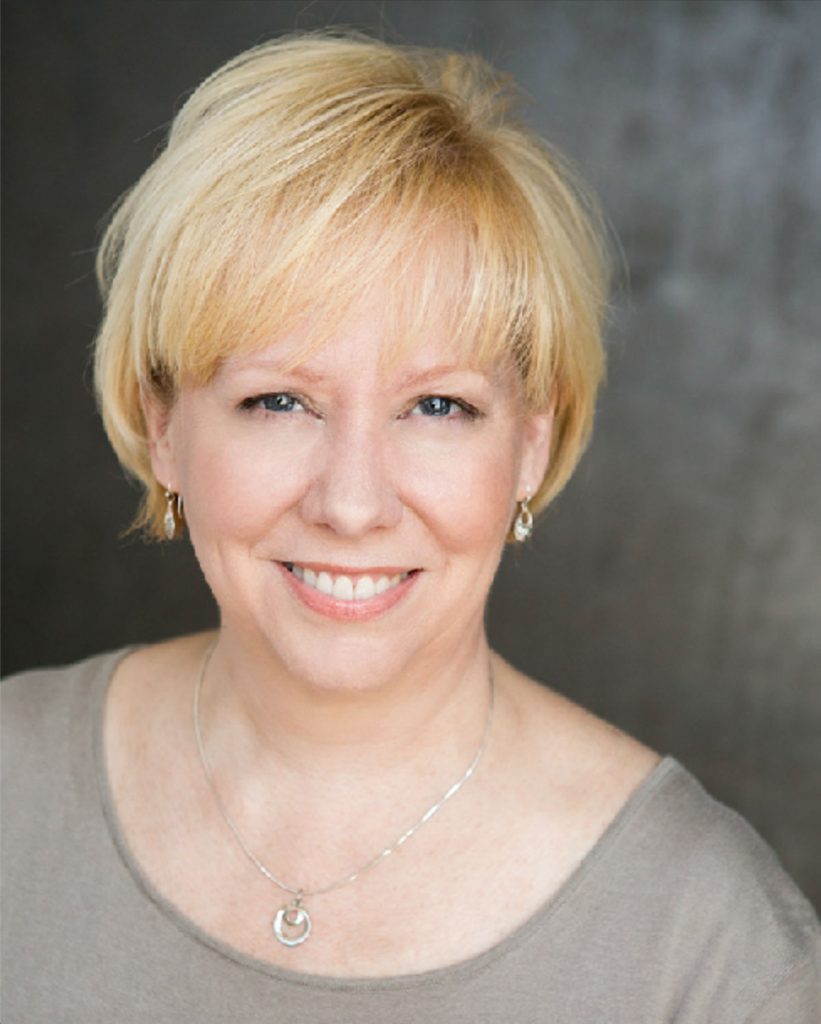
Award-winning author, historian, filmmaker and more, Mindy Johnson is a leading expert on women’s roles in animation and film history. A recipient of the prestigious ASIFA-Hollywood June Foray “Annie” Award, Mindy’s honors also include the Academy Film Scholar Award from the Academy of Motion Picture Arts & Sciences/Oscars.org, and the ASIFA–Hollywood AEF Grant, for continued research and writing on the contributions of the earliest women within our collective animated and cinematic past. Mindy writes and speaks on early cinema, animation, women’s history, and creativity and teaches at CalArts, UCLA and Drexel University in Philadelphia.
Bessie Mae Kelley: Titles, Slides & A Woman at the Dawn of An Industry. As transitions unfolded from illuminated slides to animated cinema, one woman designed, animated, and directed alongside many of the men who later became titans of an art form, yet her name and work have been lost from history…until now. Bessie Mae Kelley’s graphic designs, title work and early animation appeared in lecture halls, debuted on the vaudeville & Chautauqua circuits and dazzled audiences on the silver screen. Working with some of the most notable men of the day, Bessie’s work transformed our world, but she’s been erased from history, until now. Join award-winning author/historian Mindy Johnson for an engaging look at one woman’s work in the transitional days of illuminated lectures and animation.
Mathew Kneebone
Mathew Kneebone’s artistic practice is founded on research into uncertainties surrounding technology, often combining different histories, myths, and folklore. His work touches various media, including drawing, electronics, writing, sound, and performance, to reconfigure or re-contextualize certain technologies, exploring an ambivalent blend of past and present. He has recently exhibited at Rib, Rotterdam; / (Slash), San Francisco; and Kunstverein, Amsterdam. His writing has been published in Rekto Verso Magazine, Trigger Magazine, OASE Journal for Architecture, and The Bulletins of The Serving Library, among others. He teaches at California College of The Arts, San Francisco, where he is a thesis advisor.
From Ghosts to Glitches takes a historical journey of projection from an audience perspective. From the era of phantasmagoria to modern digital devices, artist Mathew Kneebone explores how we interpret, and articulate mysterious visual experiences presented on screens. Kneebone’s presentation, combining talk and performance, showcases his research using a modified Magic Lantern that functions as a PowerPoint deck.
Christine Marie
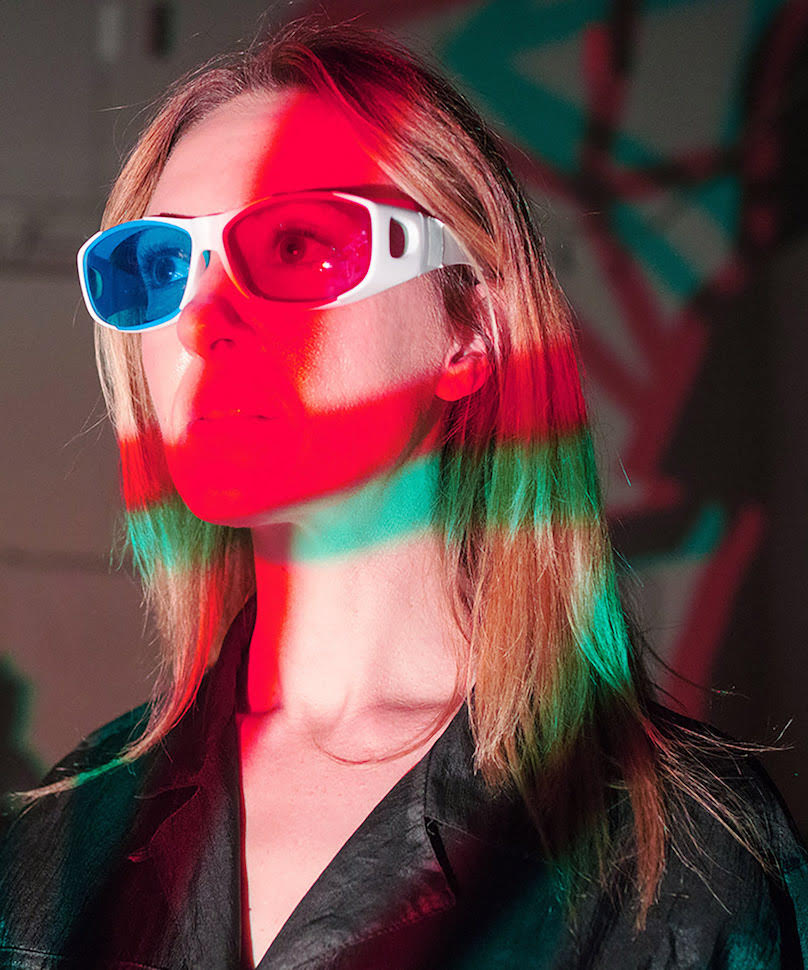
Christine Marie is an interdisciplinary artist and professor of media study at the University at Buffalo. Her work examines industrialization, oppositional forces, and the media’s gaze through immersive sensory experiences. Marie has pioneered the use of 3D shadowgrams for performance created with her re-invented stereoscopes. Her studies of traditional wayang kulit shadow puppetry in Indonesia have informed her work bridging historical techniques with modern technology. Marie has consulted for DreamWorks, taught at Pixar, and exhibited at institutions such as LACMA, REDCAT, the TED Conference, Yerba Buena Center for the Arts, the Exploratorium, the Geffen Playhouse, and the Sundance Film Festival.
A Medium of Intimacy: Inverting Ziegfeld’s Follies-Scope Creating a Post-Male-Gaze 3D Spectacle. In the 1920s, the Follies-Scope debuted, the device was used to create stereoscopic performances of showgirls using a patented shadow-graph apparatus. In 2012, I reinvented an equivalent instrument and created two original works that engage with Laura Mulvey’s seminal essay “Visual Pleasure and Narrative Cinema.” In this presentation, I will share how three-dimensional spectacles can dismantle voyeuristic separations and subvert female objectification as intended with Ziegfeld’s Follies.
Nicholas Miller
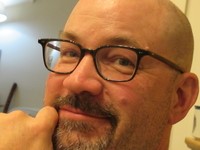
Nicholas Andrew Milleris Professor of English and Director of Film Studies at Loyola University Maryland. He is the author of Modernism, Ireland, and the Erotics of Memory (2002), and has published in James Joyce Quarterly, Eire-Ireland, Animation Studies 2.0. Recently he has contributed chapters to the collections Hitchcock and Adaptation: On the Page and Screen (2014), Animation and Memory (2020), Aardman Animations: Beyond Stop Motion (2020), and Coraline: A Closer Look at Studio LAIKA’s Stop-Motion Witchcraft (2021). His current project is an interdisciplinary study of metaphor and metamorphosis in modernist visual culture.
An Authentic Phantasmagoria Show. This presentation explores the JJ Griffin Collection, a large cache of recently discovered late-nineteenth-century lantern slides now held at the Loyola Univ. Library in Baltimore Maryland. Employing the Griffin slides and lantern, Loyola students wrote and performed an authentic phantasmagoria show in the fall of 2023. The presentation will show parts of their work and discuss the use of antique lanterns and slides to reinterpret classic metamorphic characters such as Dr. Jekyll and Mr. Hyde.
Rachel Makana Aloha O Kauikeolani Nakawatase (Shrine Maiden)
Rachel is an artist and designer who focuses on art direction and costume design forfilm and television. She received her BA in 2013 from UCLA’s School of Theater, Film, and Television where she was fortunate enough to study theater design and stagecraft under some of the industry’s most accomplished designers. She has worked on numerous feature films, short films, and theater productions and is one of the founding members and current festival director of the San Diego Underground Film Festival – a showcase for experimental/independent films, music, & performances.
Kino Lau: Many Bodies (with Melissa Ferrari and Shrine Maiden partner Ryan Betschart – see description above)
Jorgelina Orfina
Drs. Jorgelina Orfila and Dr. Francisco Ortega are Associate Professors in Art History and Graphic Design respectively at the School of Art, Texas Tech University, USA. They conform the collective of art scholars animationDuo, which explores the intersections and diffractions between animation and modern and contemporary art. They have published several articles on art history and animation and coordinate the Animation-Making Workshops (AMW), a research initiative supported by a federal grant that explores the potential of stop-motion animation as therapeutic and didactic tool. They are also the organizers of the Animation Research Gang, a network of scholars in animation that meets annually at the SWPACA (SouthWest Popular/American Culture Association Conference) in New Mexico.
The Magic Lantern and the Institutionalization of the Discipline of Art History: The Creation of Modern Art (with Francisco Ortega). As prominent scholars have demonstrated, the institutionalization of art history in the late 19th century was made possible by the wide availability of photographic lantern slides and projectors, and the well-established conventions established by magic lantern spectacles. Thanks to them, the art historians that established the epistemological foundations of the discipline were able to analyze, interpret and compare/contrast photographs of works of art that they presented to their audience as bright, decontextualized apparitions in dark classrooms and auditoriums.
Francisco Ortega
Drs. Jorgelina Orfila and Dr. Francisco Ortega are Associate Professors in Art History and Graphic Design respectively at the School of Art, Texas Tech University, USA. They conform the collective of art scholars animationDuo, which explores the intersections and diffractions between animation and modern and contemporary art. They have published several articles on art history and animation and coordinate the Animation-Making Workshops (AMW), a research initiative supported by a federal grant that explores the potential of stop-motion animation as therapeutic and didactic tool. They are also the organizers of the Animation Research Gang, a network of scholars in animation that meets annually at the SWPACA (SouthWest Popular/American Culture Association Conference) in New Mexico.
The Magic Lantern and the Institutionalization of the Discipline of Art History: The Creation of Modern Art (with Jorgelina Orfina – see description above).
Larry Rakow
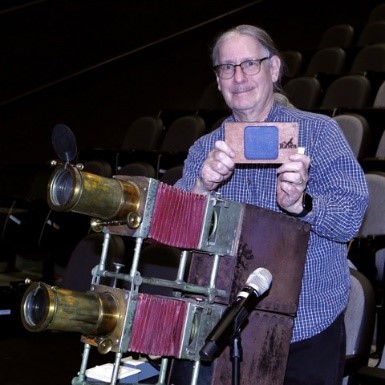
Larry Rakow is a magic lantern collector and performer. He has presented the Professor Optix Magic Lantern Show scores of times in this country and abroad since the early 1980’s. Additionally, Larry is the owner of Wonderland Books (www.wonderland100.com), a shop specializing in old and rare children’s books with a special focus on pop-up. movable, and novelty items. He has served as Vice President of the Magic Lantern Society of the US & Canada and as the editor of their Bulletin. Larry lives in Cleveland Heights, Ohio, with his wife, Susan, 2 children and 4 grandchildren.
Mixed Mediums: The Magic Lantern and 19th Century Children’s Books. The heyday of the magic lantern and the golden age of 19th century children’s literature coincided and played off one another. Not only were many magic lantern sequences based on popular children’s stories and fairy tales, but the mechanisms that animated comical and dissolving views were duplicated in children’s movable and pop-up books. So popular were lantern shows that the magic lantern itself was a relatively common motif in children’s literature. Both images of lanterns and stories and poems describing lantern shows were often found in children’s books. I’d like to present a PowerPoint lecture that illuminates the interplay between the two.
Matt Schnittker
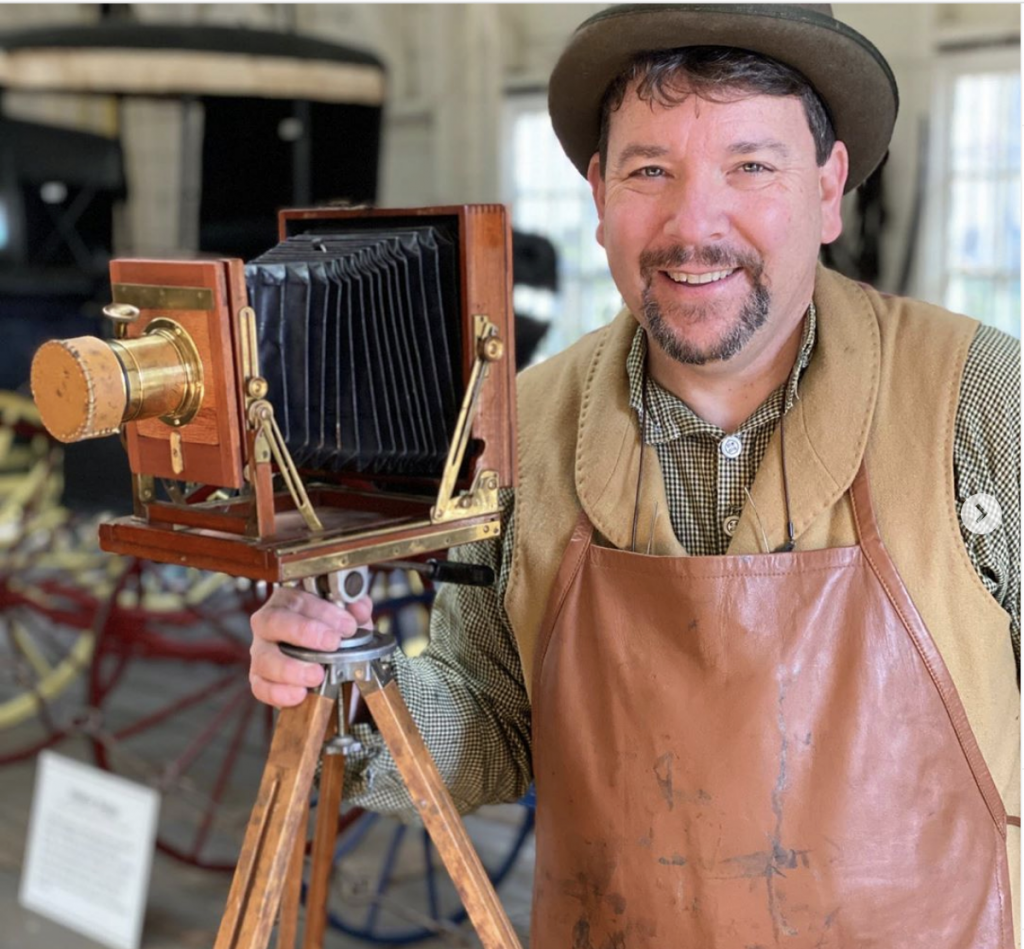
Matt Schnittker is an Animation Technologist, Magic Lanternist, and Tintype Photographer. He has spent the last 25 years in the entertainment industry where he’s been involved in many well-known animated films including Atlantis, Tangled, and Encanto. He has contributed to multiple technology patents and is a member of the Visual Effects Society, ASIFA, and the Magic Lantern Society of the US and Canada. His background in animation software and process combined with an interest in 1800’s photography inspired a journey to become a performing Magic Lanternist and he’s excited to be performing at this event.
Lighting Your Lantern: One of my first steps in becoming a performer was to work out lighting. For this talk I’ll demonstrate some of my experiments with lighting so folks can actually see the differences on the screen. I’ll demo an array of luminates such as single element LED, COB LED, Halogen and incandescent bulbs.
For Mature Audiences Only: Nudity and Burlesque has always been a topic of interest and discussion. One of my more popular shows has been a collection of nude images, some historic, and some reproduction. This presentation will contain works by Oscar Gustave Rejlander as well as modern collodion photographers.
Slip Slide Spectacular: Let’s have some fun with Chromotropes and slip slides. What Magic Lantern show would be complete without them? A self-curated show as a tribute to the animated slides we all love.
The Disney Slides: I’ll perform a couple sets of the original Ensign slides from the 20’s and 30s along with accompaniment by my son, Benjamin Schnittker.
Emma Straus
Emma Straus is a visual storyteller and writer with an interest in creative storytelling through many different mediums. Her experience with magic lanterns began in the classroom, after she and her classmates witnessed a 21st century lantern show and were inspired to write, stage, and create their own. Straus aided in scripting, directing, as well as costuming in order to help make their show happen. The result was an evening of magic from the past being witnessed in the present. Straus has a background in other forms of visual storytelling such as filmmaking, and is interested in the ways cinema, art, and other forms of media connect each of us.
The Spirits of Phantasmagoria Rise Once More: Young Lanternists. Hundreds of years ago, audiences gathered in darkened rooms to witness with terror and delight magic lantern shows that challenged their perception of reality. At the hands of the skilled lantern operators, spirits could rise, stories could unfold in midair, and by the end of the evening, audiences would find themselves clapping in amazement at the spectacle.
Hundreds of years later, the magic lantern made its way into the intrigue of a group of college students who would go on to produce their very own, maintaining the same effect the shows had at their height: inviting audiences into a space where they could suspend their reality and challenge their imagination.
Brittaney Talbot
Chad Wyszynski and Brittaney Talbot are a married couple who sometimes call themselves “The Wyzbots.” Brittaney is a puppeteer who specializes in shadow puppetry, full suit puppetry, and animatronics. She just returned from the Edinburgh Fringe Festival where she was the puppet designer and lead for “I Sell Windows” by Kacie Rogers. She is also a professional triathlete. Chad is a software engineer with a focus on online games. He is also a writer and tarologist.
A Reading’: Shadow Puppetry (with Chad Wyszynski). Using overhead projectors in conjunction with live animation on a multi-plane camera, we present images from the Dodal Tarot and Tarot de Marseilles to create a guided interpretation of these images. The performance contains traditional stage magic illusions along shadow puppetry and live animation on a multi-plane camera. We aim to demystify the idea of interpreting the tarot but continue to recognize its magical.
Sara Velas
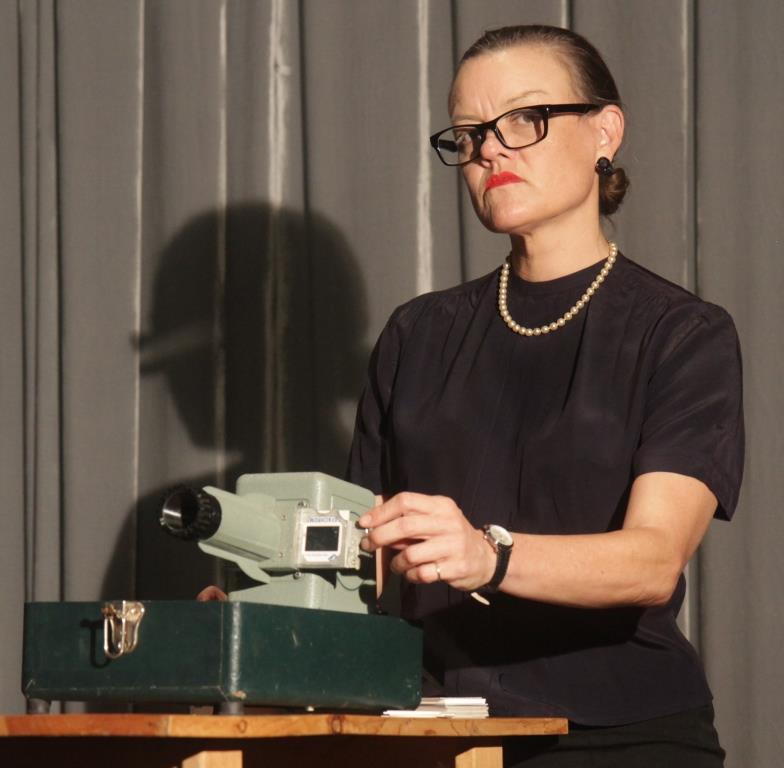
Sara Velas and Ruby Carlson are artists and curators of the Velaslavasay Panorama (VP), a Los Angeles museum dedicated to multi-sensory, contemporary experiences of 19th-century visual amusements. The VP features a garden, immersive installations and the only 360-degree painted panorama on the West Coast, currently exhibiting: Shengjing Panorama, a visionary view of everyday life in Shenyang, China circa 1910-1930, with accompanying model railroad dioramas of La Grande and Shenyang Stations.
“Florence in Ruin—or—The Great Escape.” (with Ruby Carlson – see description above)
“Illuminated Projections at the Velaslavasay Panorama (with Ruby Carlson – see description above)
Christine Veras
Christine Veras researches the integration of physical and digital technologies to explore the multimedia possibilities of animation. Her background in animation studies combines history and practice, positioning her as a scholar and practitioner. She earned her Ph. D. from the Nanyang Technological University Singapore, researching traditional 19th-century optical toys reinvented as contemporary animated installations. Veras invented the Silhouette Zoetrope (aka Silhotrope), a patented animated optical illusion device that is now part of the permanent collection of three museums in Europe. She is an Assistant Professor teaching and researching at the Bass School of Arts, Humanities, and Technology at UT Dallas.
The Legacy of Magic Lantern Shows and Their Impact on Today’s Filmmaking Technology and Techniques. In this presentation, I invite you to consider how the technology and techniques used in today’s image editing and filmmaking were predated by magic lantern shows of the seventeenth century. The use of masks, editing, and animation in these early shows was ahead of its time and laid the groundwork for the type of multimedia presentations we commonly see today. They are great reminders that while technology advances, such fundamental concepts and ideas have deep historical roots. This ongoing research aims to shine a light on the possibilities for connecting past and present through exciting experimental media archeology educational initiatives.
Georgia Westwood
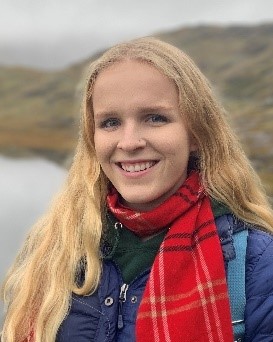
Georgia Westwood is a puppet builder, puppeteer, and stop motion animator from Long Beach, California. Her love of puppetry stemmed from a fascination with stop motion started by her dad, who introduced her to Wallace and Gromit. After attending an Aardman model-making workshop in Norwich, UK, Georgia decided to try her hand at stop motion animation and created the series: “Humphrey’s Holiday on Earth.” From there she explored puppet building using hand and marionette puppet techniques. Georgia and Margot collaborated on “James and the Giant Peach” using rod puppetry, paper mâché, and foam clay to bring each bug to life.
Traveling to Movieland (with Margot Fitzsimmons – see description above).
Galen Wilkes
Galen Wilkes has been a champion of the arts and entertainment of the turn of the 20th century years since he was a teen. The mechanical performing arts have been a big part of his interest and presentations over the decades. The magic lantern, illustrated songs, the phonograph, player piano, and early motion pictures have all starred in his entertainments and historical lectures. He is also well known as a ragtime historian, performer, and composer. He produced two radio series, in New York and California, and holds BA and MA degrees in cinema.
Talking Movies in the Silent Era: How Mechanical Marvels Broke the Sound Barrier 1890s-1920s. Beginning in the 1890s, inventors put two mechanical marvels together – moving pictures and the phonograph – to create talking pictures. The silence of the actors plagued producers and audiences alike, but the limits of technology didn’t stop them from creating “talkies”. Galen Wilkes hosts this fascinating show on forgotten entertainment history, presenting a number of rare surviving talkies from the thousands that were made from 1890s to the 1920s.
Chad Wyszynski
Chad Wyszynski and Brittaney Talbot are a married couple who sometimes call themselves “The Wyzbots.” Brittaney is a puppeteer who specializes in shadow puppetry, full suit puppetry, and animatronics. She just returned from the Edinburgh Fringe Festival where she was the puppet designer and lead for “I Sell Windows” by Kacie Rogers. She is also a professional triathlete. Chad is a software engineer with a focus on online games. He is also a writer and tarologist.
A Reading’: Shadow Puppetry (with Brittany Talbot – see description above).